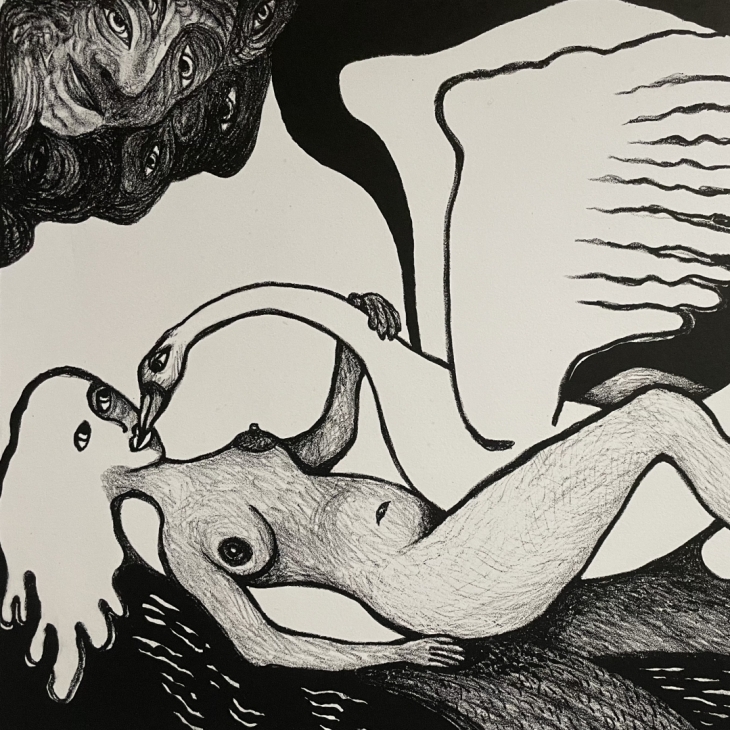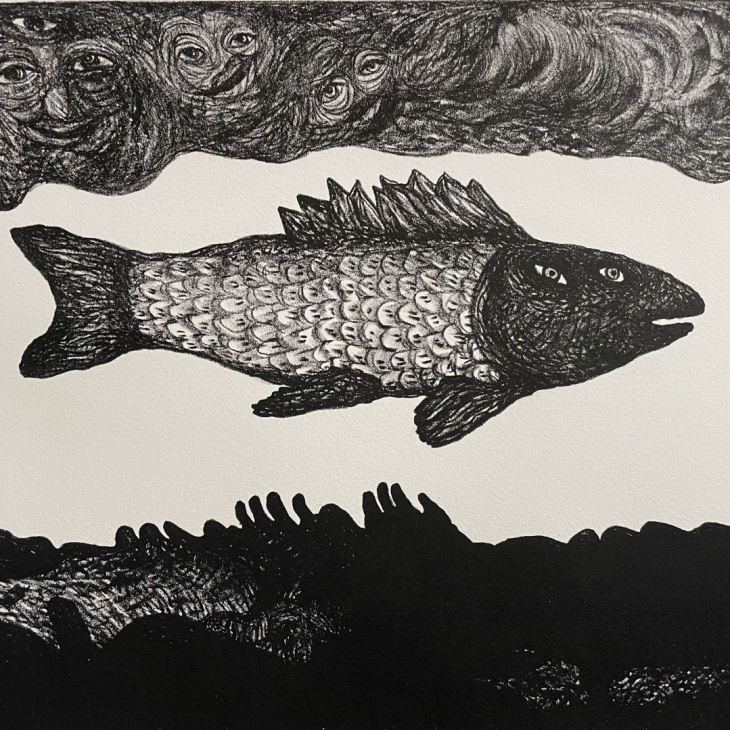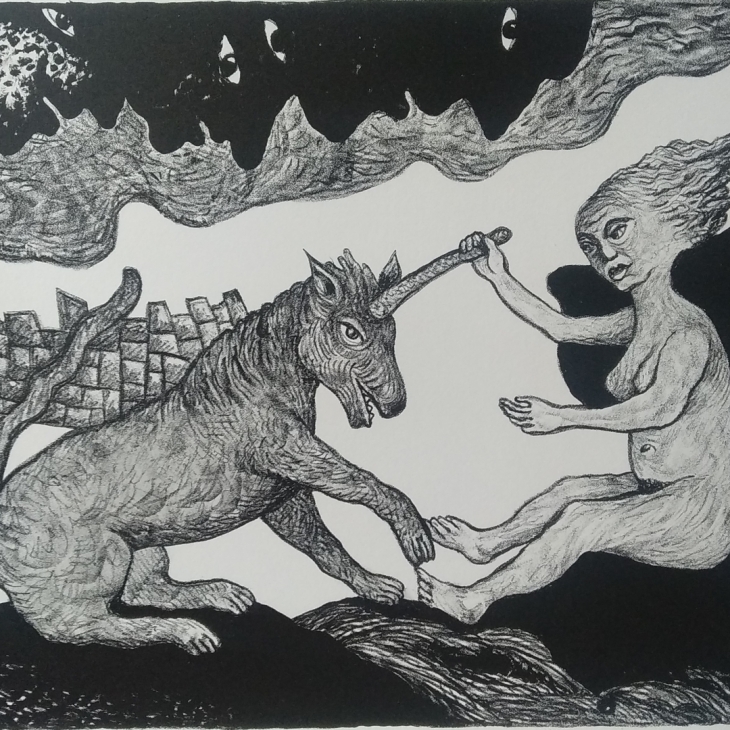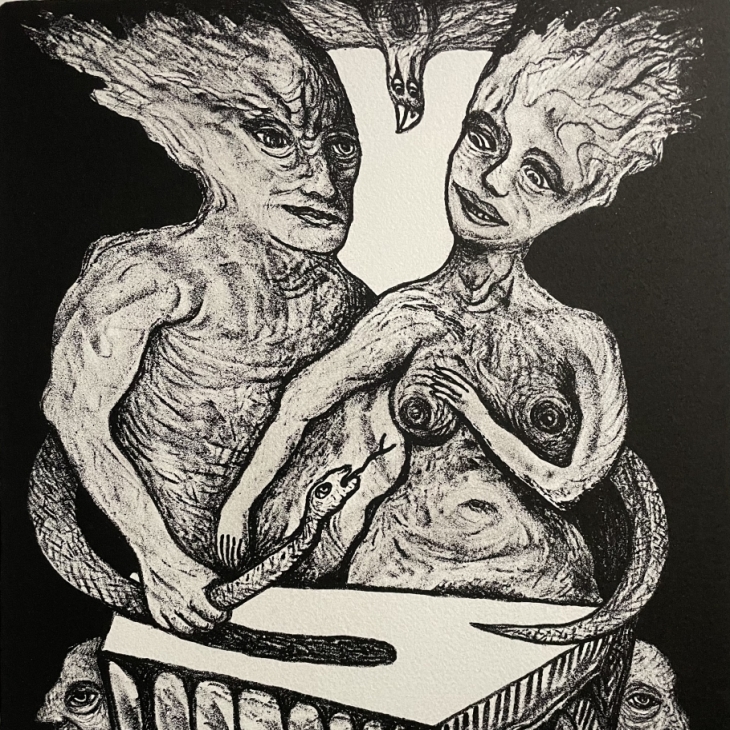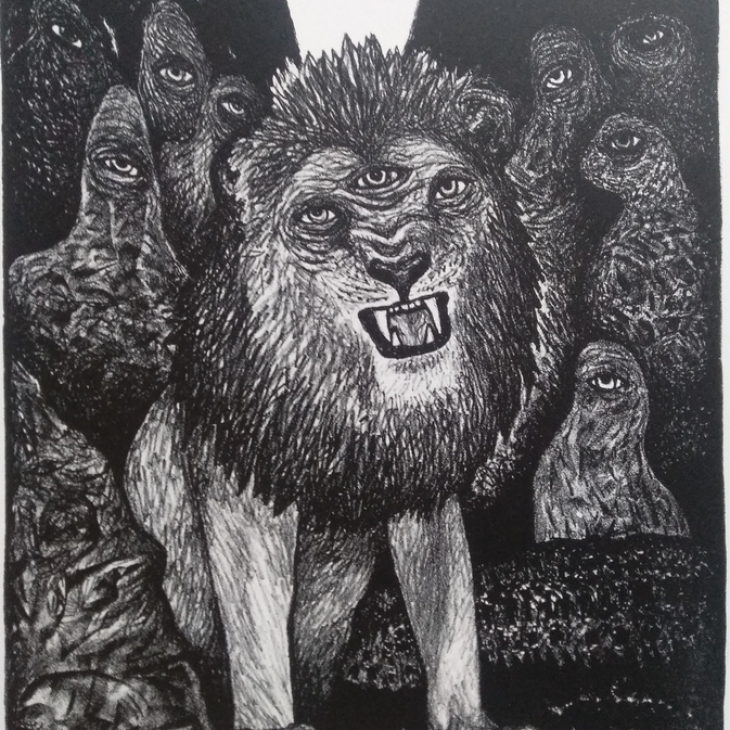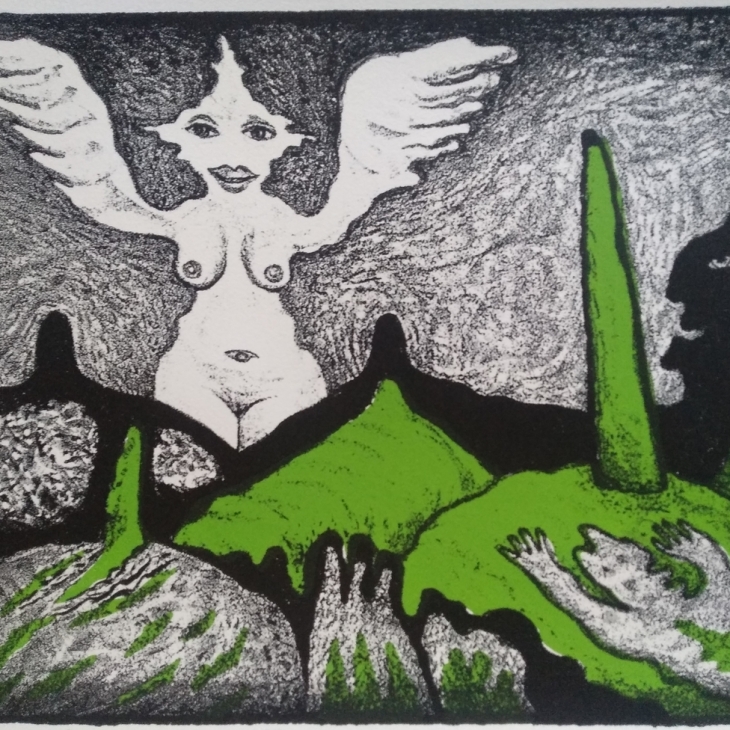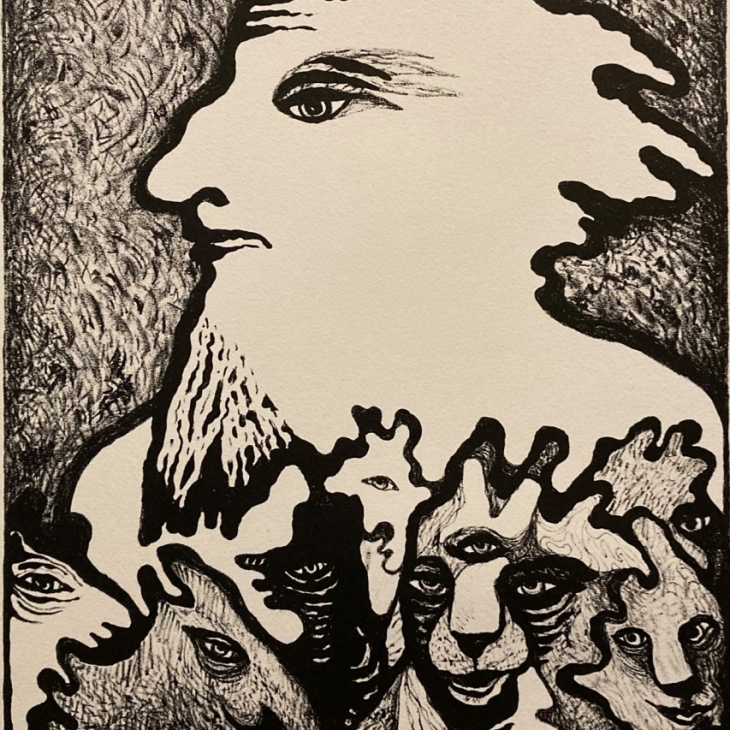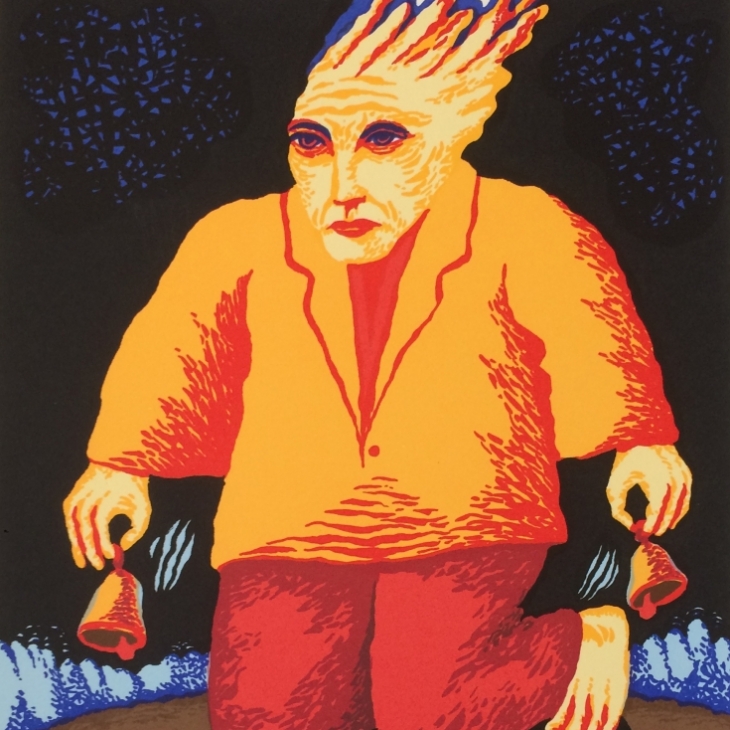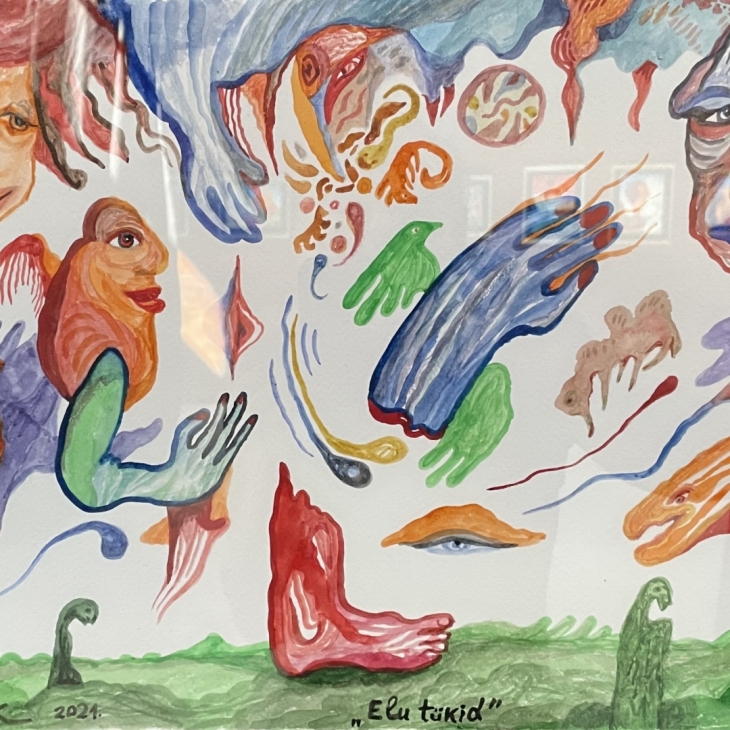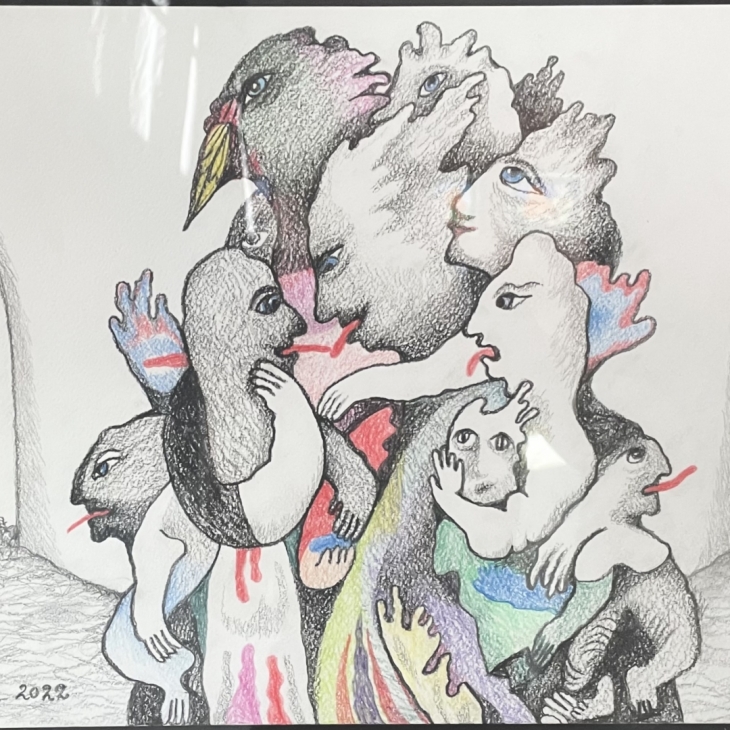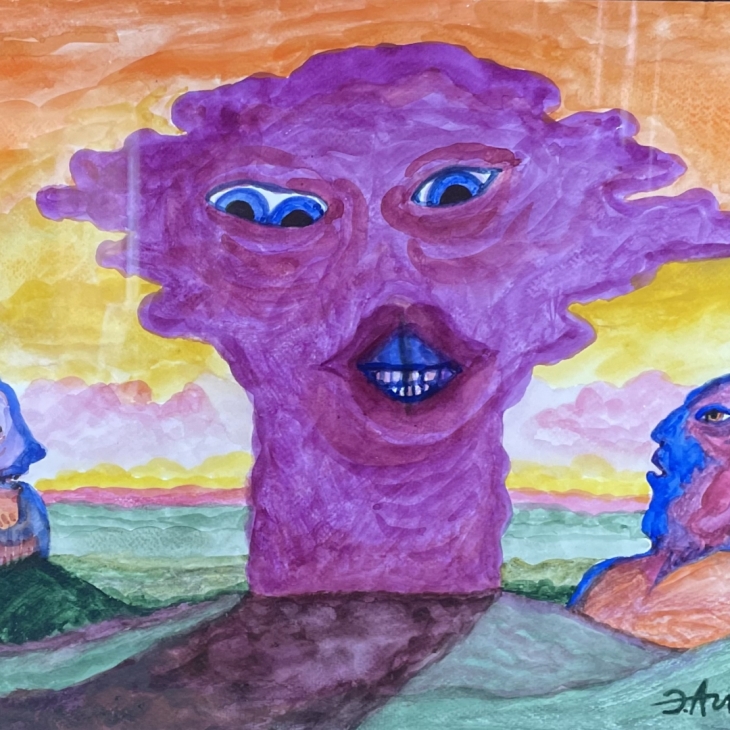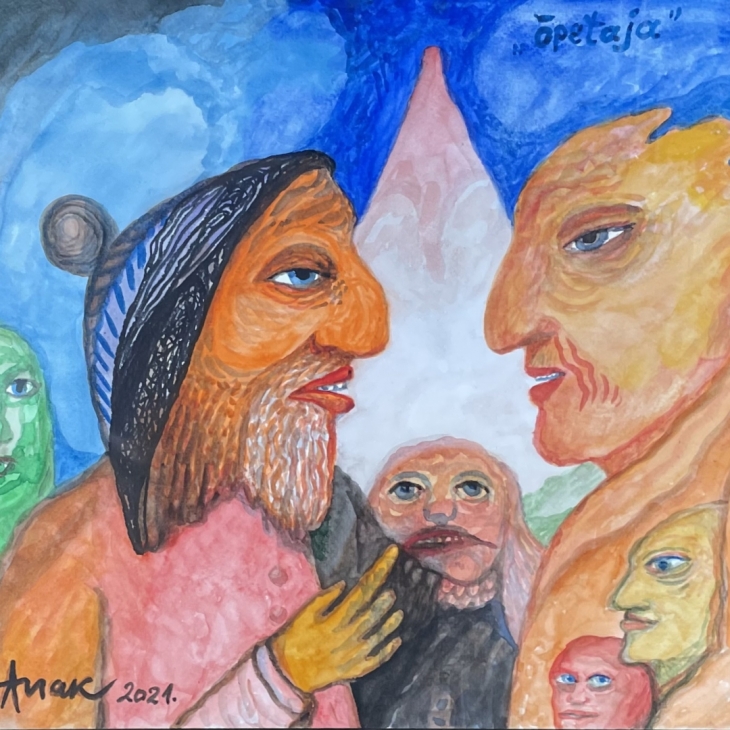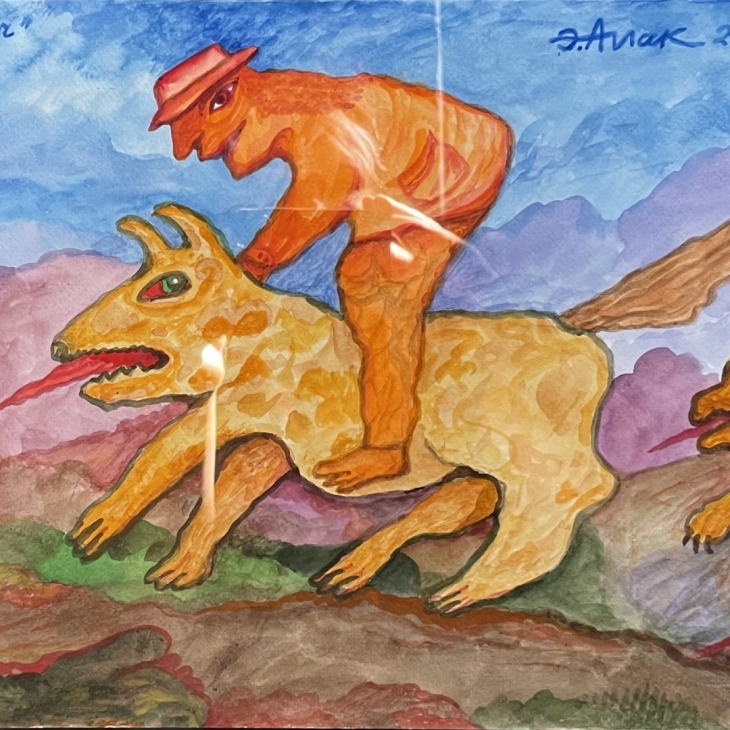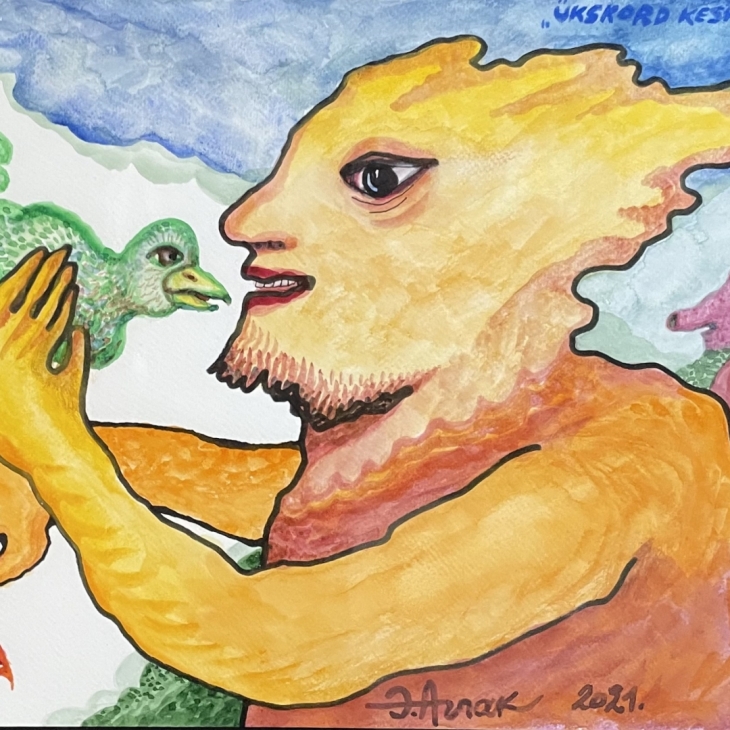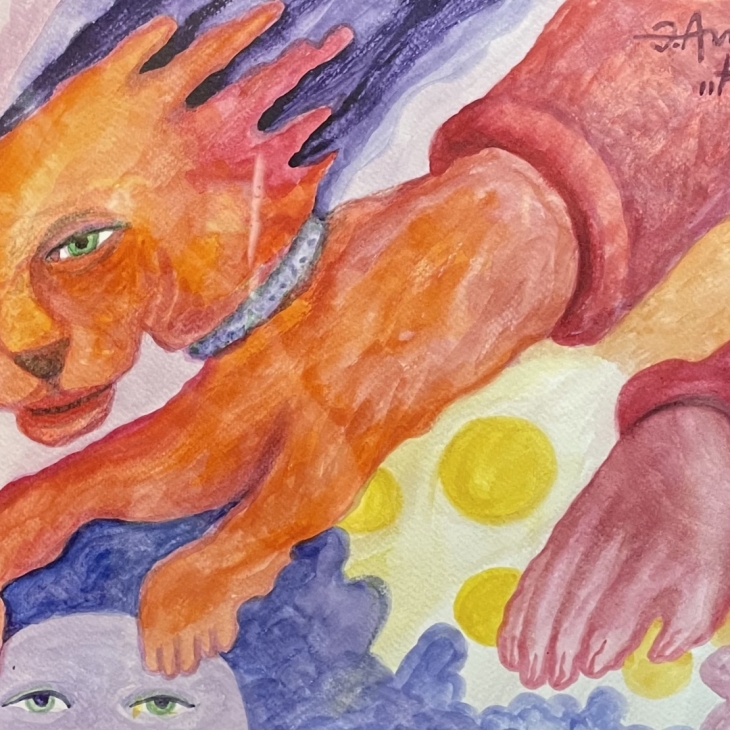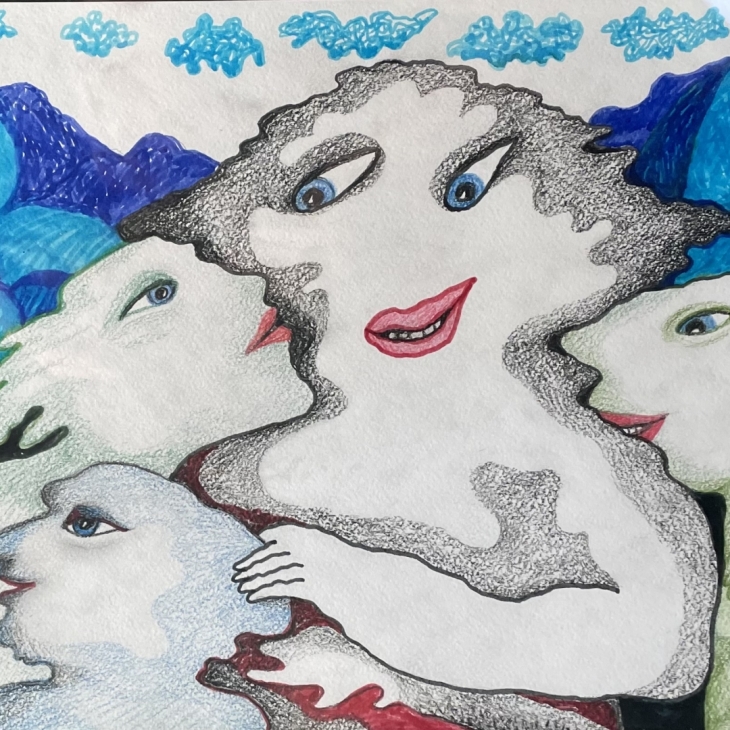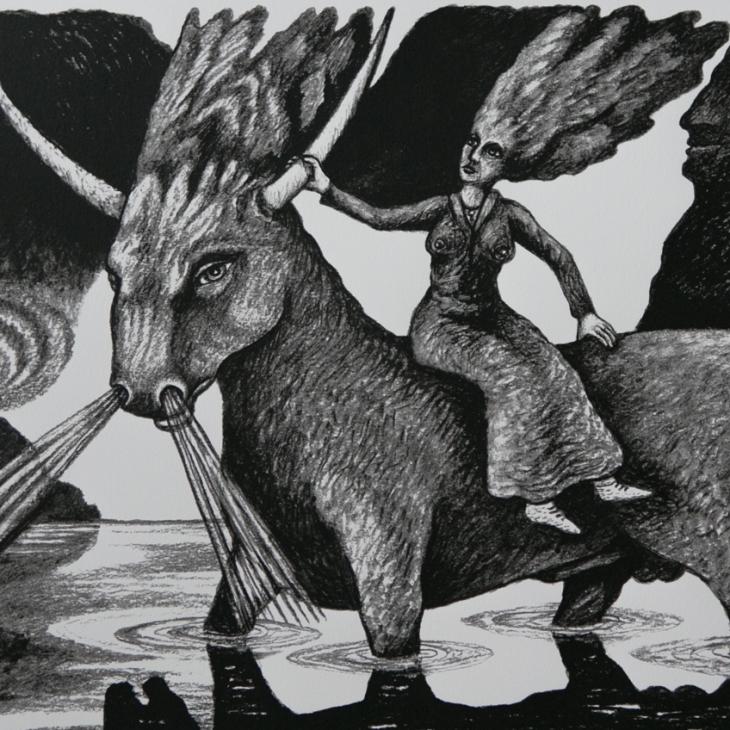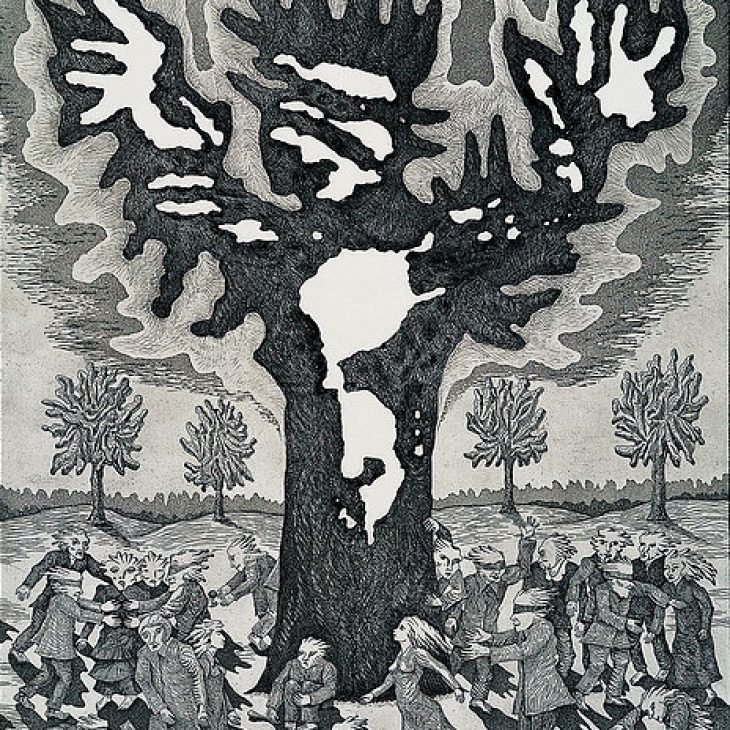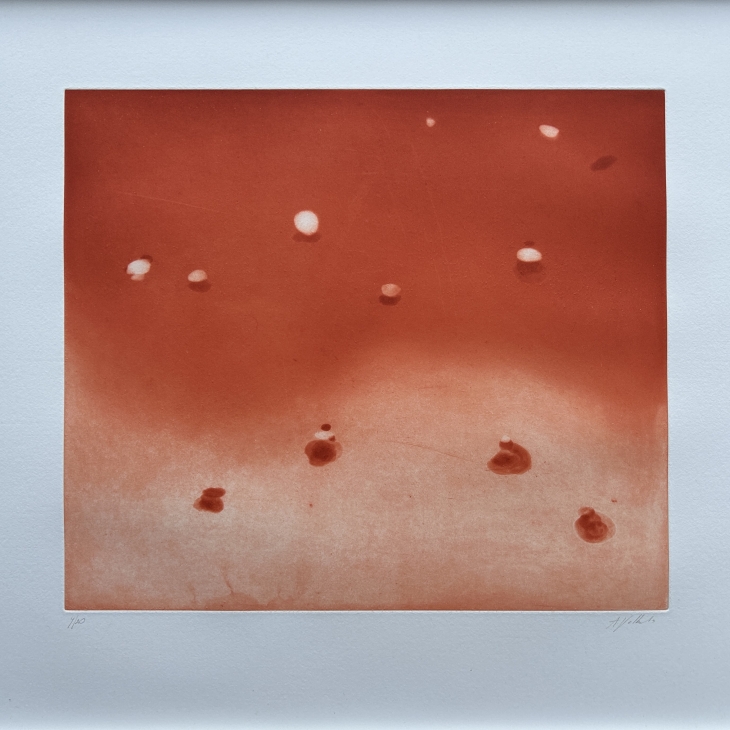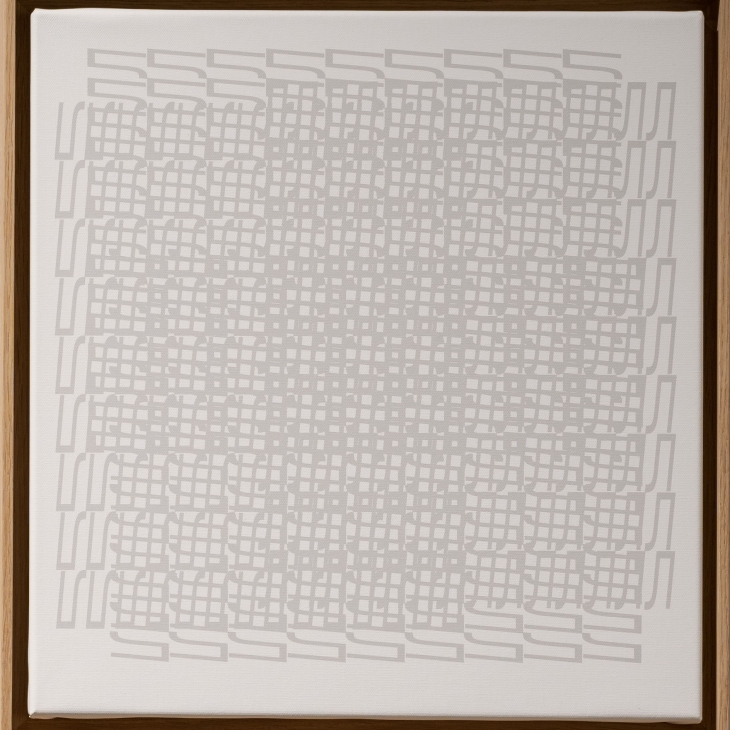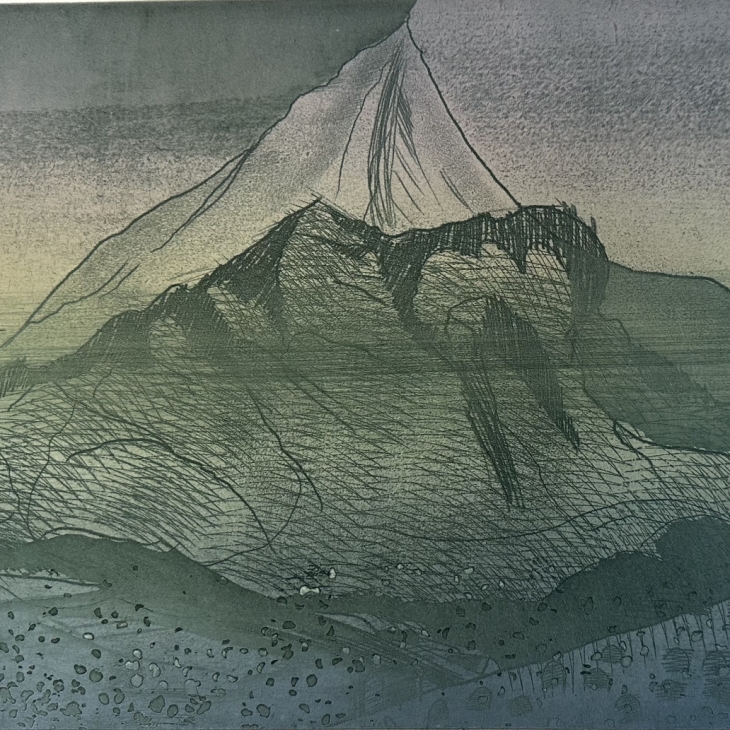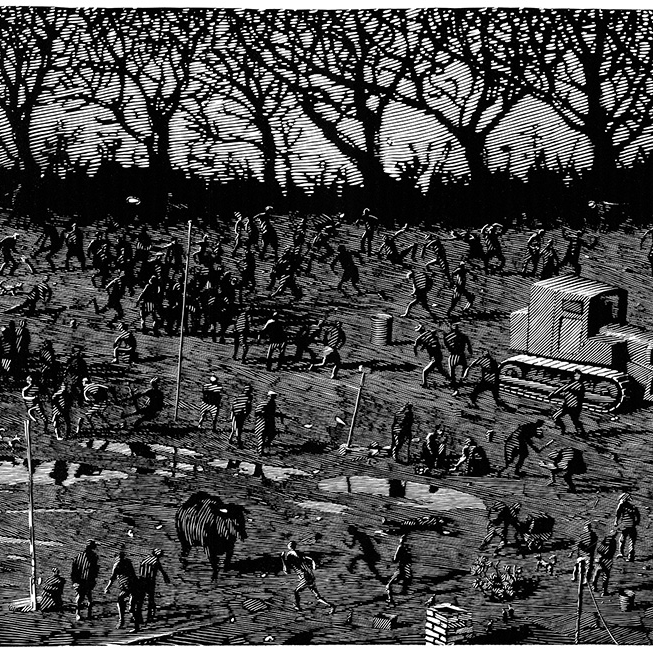Jüri Arrak
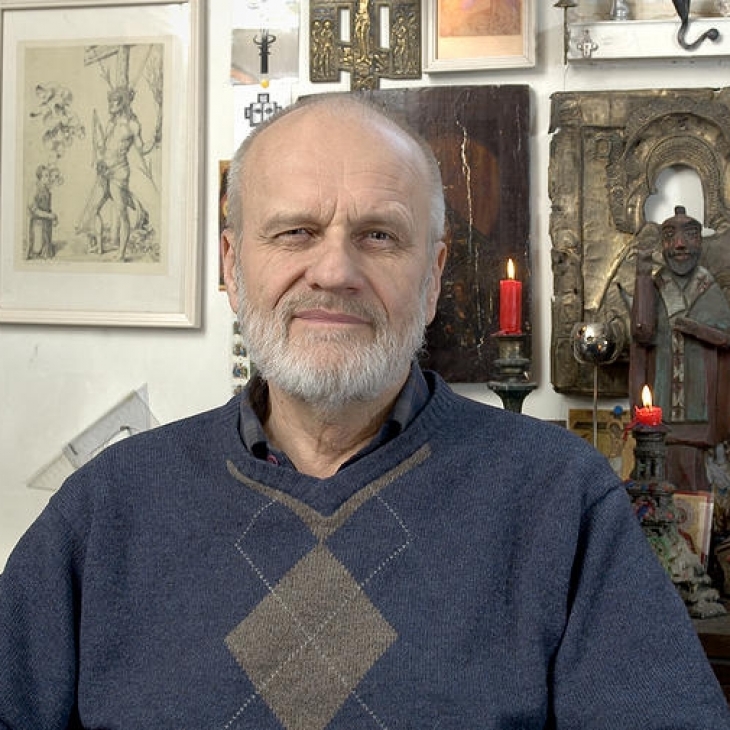
Artist is based in: Estonia
Jüri Arrak (1936-2022) is a legend of Estonian contemporary art, one of the country´s most appraised and beloved artists. While his ouvre is highly versatile, including artistic metalwork, carpets, installations, happenings, he is best known for his paintings and prints.
Arrak entered the art scene in 1960s, soon developing into one of the leading figures in this arena. His early work includes syrrealistic drawings influenced by Salvador Dali and Pablo Picasso. The main elements of the artist´s later signature style were already present here, including contrasting colours, deformation of figure and space, humour, sensitive social nerve.
Arrak´s supernatural world is made up of unexpected visions, paradoxes and metaphors, in here “masquerade and confession form an inseparable and indivisible whole“ (Boris Bernstein). His main character is a masklike figure with a “melting“ head, that many Estonian know by an animation focusing on a mythological hero, Suur Tõll, as well as by the album cover of a heavy metal band Metsatöll.
Prizes: among ten artists – Hundred Great Persons of the century, public vote (1999), Kondrad Mägi Prize (1997), Annual Prize of the Estonian Cultural Fund (1996), Kristjan Raud annual Prize (1990), Diploma of the Vilnius VII Painting Triennial (1987), Diploma of the Baltic Book Graphics Triennial (1984), Diploma of the Vilnius V Ex Libris Biennial (1983, 1985), Annual Painting Prize of the Estonian Artists’ Association (1977, 1986), Diploma of the II Small graphics Quatriennal, Banska-Bystrica, Czhechoslovakia (1977).
Works in collections: Estonian Art Museum, Tartu Art Museum, Tallinna Kunstihoone, Tretyakov Gallery, Moscow; Krakow National Museum, Museum Ludwig, Cologne; Museum of Modern Art, New York; New Orleans Art Museum; The White House, Washington; New York Public Library, Zimmerl Art Museum, New Jersey, USA; Museum of University of Western Sydney, Australia; Randers Art Museum, Denmark; Estonian House, Stockholm; in addition in private collections in Estonia and abroad.
Sources used: Art Museum of Estonia, Estonian Artists’ Association

